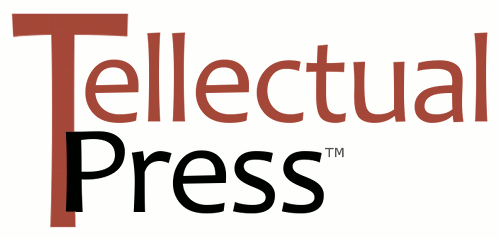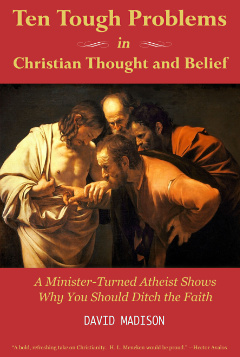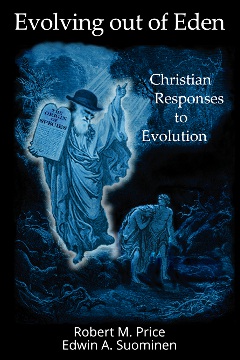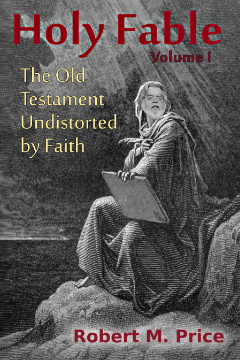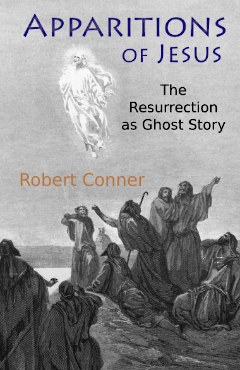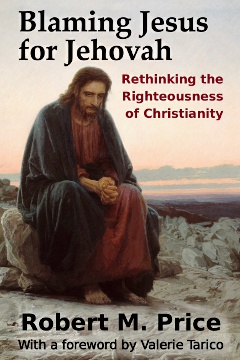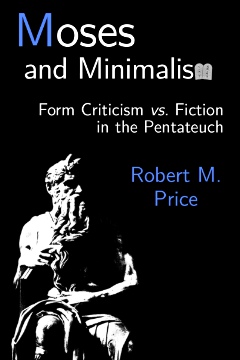The Bold Testament: This is my Body
There is a field in the French countryside outside Paris where rough-hewn stones and fragments of bone keep turning up under the plow. The old man who has stopped and examined these finds over the years thought they were the result of some shell exploded during the First World War. But one day he came across a gold chalice with bloodstains that would not wash off.
The chalice had not been seen for seven hundred years, when three frightened laymen muttered frantic prayers to the Blessed Virgin while setting fire to the planks and timbers of a little Dominican monastery to erase its memory. They were careful not to touch the chalice or the circular loaves of flatbread that sat next to it as they put their torches to the altar on which it rested. Then they cut the throats of a priest and six monks, begging forgiveness for what the bishop had commanded them to do. As they tried to leave, their work complete and the flames now hot at their backs, they found that the door had been blocked. Only the bishop had remained outside, and he would go to his grave with the story of what had happened inside the walls that would crumble, forgotten, among the bones at the site that became a field in the French countryside outside Paris.
A few days before the fire, standing before the altar alongside his five fellow monks, Brother Amis had watched the priest give thanks and mutter his invocations to the God Amis did not worship.1 For once, he listened closely to the familiar stream of words from the priest, who seemed not to hear them himself as he plodded through his routine business of celebrating Mass in the little church he visited once each week. He implored the Holy Spirit for the miracle of consecration, raising a loaf of flatbread in the air for the monks to adore in the flickering candlelight so they could witness its miraculous transubstantiation into the body of their Lord. The wine in the chalice resting there on the altar would undergo its own change in a moment, too, into the very blood of Jesus.
This transubstantiation thing was a neat trick, Amis thought. Just conceal the flesh and blood with “accidents” of bread and wine that stick around after consecration, that look and taste identical to bread and wine.2 It was some mysterious “substance” that got replaced, Aquinas said, and the Dominicans were taking his Summa Theologiae as dogma now.3 Amis found it as tedious as all the other books they spent their days copying, hunched over in the scriptorum.
The bread-substance just disappears, replaced with the substance of Christ’s body. It wasn’t just a sign of his body, as Berengar had suggested centuries ago in a moment of rational thought, which of course he’d had to repent of.4 No, it’s the real thing, except it can’t “be detected by sense, nor understanding, but by faith alone.”5
Amis never detected anything other than stale flatbread, but he had no faith at all. Looming inside him was something else, something that made the others around him uneasy, feeling that all was not quite right about this strange brother with the penetrating dark eyes. It even disturbed Amis to realize what he was, but he could be nothing else.
“Take this, all of you, and eat of it,” the priest said, reciting the Words of Institution, “for this is my body which will be given up for you.”6 His fingers held the edges of the circular loaf lightly with practiced reverence. Yet it was not a body the monks saw, but a loaf of flatbread.
Amis was tired of invisible things that could only be seen by faith he did not have. He only rarely and secretly used his dark talents, preferring not to have his life end tied to a burning stake, but just now a spark made the leap over his usual caution and a decision flared in his head. Today, he said to himself, an accident will happen to the accidents.
The priest’s arms shook visibly as he felt something changing in his grasp. Amis smiled as he saw the listless mask of bored routine transform into sudden shock on the priest’s face. What’s the matter, Father? The priest squinted hard at the bread that was now shrinking back in places from its round border. He brought his hands down closer to see past any shadow-tricks of the gloomy candlelight. But that wasn’t the cause of what he was seeing.
His eyes opened wide as his fingers adjusted their hold on the new contours of the changing thing they held. Only the bottom part of the loaf remained flat; the rest was pulling itself into little baguette shapes. Six of them in total, one much wider and flatter than the rest, four of them all close together and long. The priest moved his fingers to the bottom, to the one remaining flat area no bigger than his palm. A palm, yes, that’s what it looked like now, and the skinnier baguettes extending from it were forming into joints. It didn’t look like bread at all anymore. The crust had a different texture. There were criss-crossing lines on the flat area.
The priest turned the thing around to look at the other side, and when he saw the knuckles and tendons strung tight under skin that had just formed from the crust of what seconds ago was bread, he let out a long and quiet Ooooohhhhh. Amis couldn’t tell if it was from shock or maybe reverent adoration, but the man clearly hadn’t been expecting his little incantation to actually produce what he’d said it would, for once. The hand was complete now, nails on the fingertips and a ragged stump at the end of the palm with two broken-off bones and stringy things sticking out.
“A blessed apparition,” a monk standing next to Amis said quietly, probably doubling the number of words he’d used all week. “The species of our Lord has been formed in our eyes for the purpose of showing that Christ’s body is truly under this sacrament.”7 The priest looked down at the grave old monk, and then back at the hand he was holding. He didn’t seem convinced that it was either blessed or an apparition.
“Uh, it’s not just my eyes seeing it as a hand,” the priest said, all his professional solemnity abandoned. “It feels like one.” He hefted it, moved his fingers around the edge of the palm, and then delicately touched the fingertips, pushing the fingers up and down, testing the joints. The white and gray and bluish glistening horrors at the other end he left alone.
“Proceed,” said Amis, a single word spoken loud and expecting no dissent. The brothers leaned forward and looked over at him, this monk daring to command a priest during Mass. The priest stood mute, uncertain, his eyes flicking from the hand to Amis and back again. “Proceed!” Amis said again, his voice turning upward, impatient. He stepped toward the altar and pointed at the knife the priest carried on his travels.
There was nothing else for the priest to do. He set the hand down on the altar, saw the chalice there, and remembered the order in which the Communion Rite must be performed. He picked up the chalice and swallowed what was in it. He somehow forced the mouthful down, gagging, his eyes crammed shut. He searched out the watching eyes of the monks and they knew what he’d just drunk. The priest wiped his mouth, and got to working with his knife.
He stepped down from the altar holding seven pieces of the hand in one of his own. The last piece was for him, and it could wait. “This is the body of our Lord, given for you,” he rasped to Amis, his shaking fingers holding the thumb, severed at the base, in the space between their faces.
Amis could see the bloodstains still on the priest’s mouth. He smiled slightly, letting the priest know that, yes, he was the one who had lifted the veil. And he did not regret it, even knowing that the bishop would never let word get out and expose the Sacrament for what they all said it really was.
He opened his lips to receive the body of Jesus Christ, a raw and ragged piece of it with no accidental appearance of bread to hide the horror of what they were doing. He extended his tongue and took the thumb into his mouth with it, turning toward the pious monk next to him, who no longer looked reverent at all. Amis wrapped his tongue around the thumb inside his mouth, feeling the delicate dry texture of the skin, then began scraping the flesh from the bone with his teeth as he wondered what it would feel like to burn.
Notes
-
Amis is a Medieval French name listed at behindthename.com/names/gender/masculine/usage/medieval-french, and I liked the fact that it’s also the last name of Christopher Hitchens’s best friend. My thanks to two friends of my own, Robert M. Price and Chuck Shingledecker, for their enthusiasm and suggestions for this story idea. ←
-
Thomas Aquinas, Summa Theologiae, III, 75, Art. 5. ←
-
In 1278, the “Dominican General Chapter formally imposes [Aquinas’s] teachings on the order.” Thomas Acquinas: Christian History Timeline, Christianity Today, christianitytoday.com/history/issues/issue-73/thomas-aquinas-christian-history-timeline–storms-of.html#storystream ←
-
Geoffrey Wainwright and Karen B. Westerfield Tucker, The Oxford History of Christian Worship, p. 234. Aquinas mentions Berengar(ius) in Summa Theologiae, III, Q. 75, Art. 1. ←
-
Summa Theologiae, III, Q. 75, Art. 1. ←
-
This was spoken in Latin, of course. ←
-
The monk’s reverent statement is pretty much a quote from Summa Theologiae, III, Q. 76, Art 8., where Aquinas discusses apparitions that participants occasionally saw of “flesh, or blood, or a child” in the sacrament. Sometimes, he writes, “Christ’s entire body is not seen there, but part of His flesh.” Religious hallucinations have a long and fascinating history. ←
